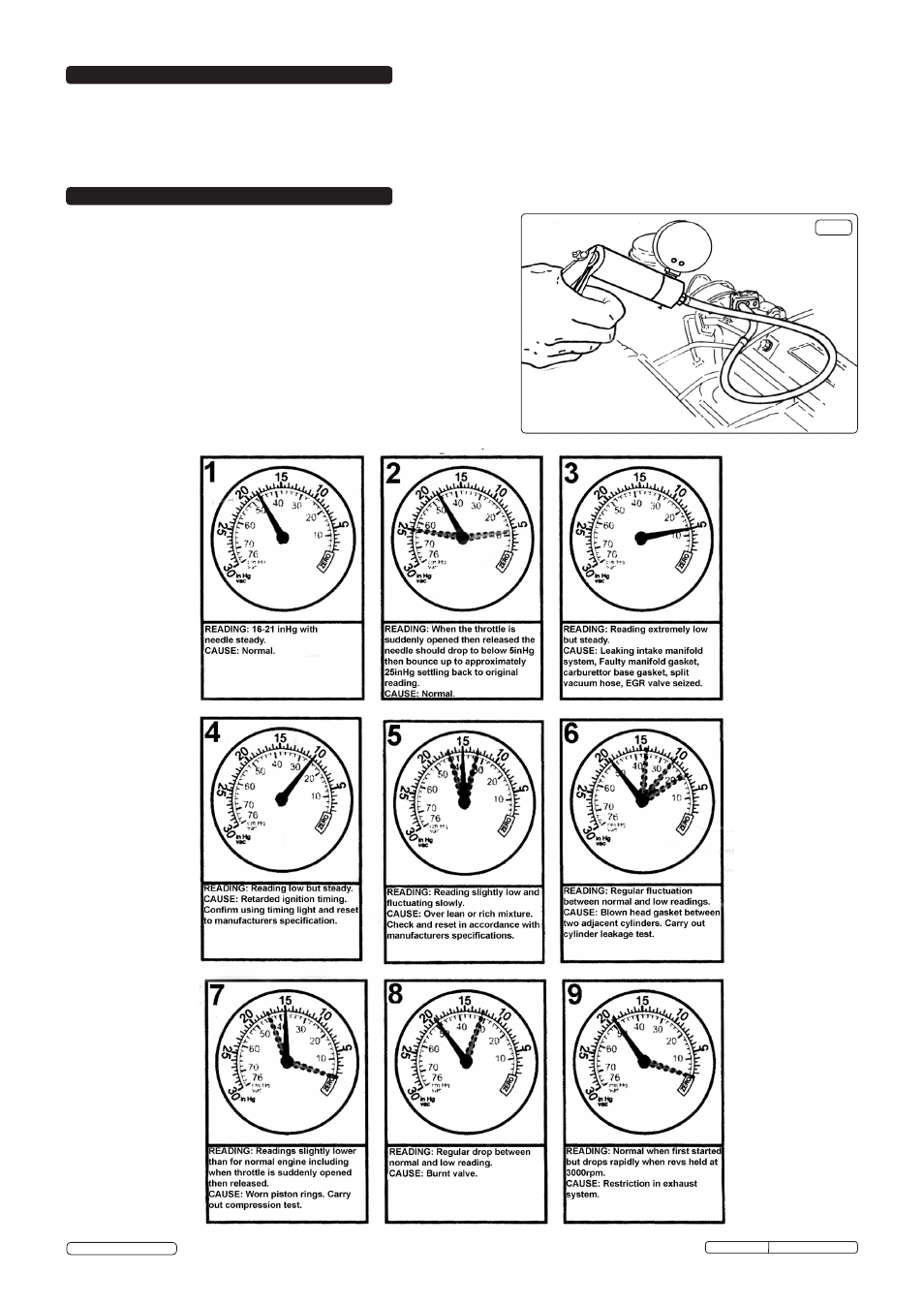Inlet manifold systems 3. introduction – Sealey VS4022 User Manual
Page 2

The use of a vacuum gauge is often overlooked when determining mechanical condition and carrying out fault diagnosis on internal combustion engines.
monitoring actual manifold vacuum is invaluable when troubleshooting engine faults. This can only be carried out by using a good quality vacuum gauge and this,
coupled with a hand-operated vacuum pump, also allows static testing of all types of vacuum operated systems. set out on the following pages are applications
that the Vs4022 vacuum tester kit can be used for, but it must always be remembered that these are examples only and reference to manufacturer’s service
manuals should always be made for correct testing procedures and specifications. In addition to this, it is always recommended that additional tests, ie. compres-
sion tests, cylinder leakage tests, ignition timing checks etc. be carried out to confirm indications of vacuum gauge readings.
fig.1
4.1. Analysing engine Mechanical condition via Manifold Vacuum Readings
4.1.1. The readings shown below are only examples of what may be observed. It is
important to remember that it is the action of the needle rather than the actual
reading that is more important. Varying engine types will run different manifold
vacuum pressures, depending on camshaft profile, valve overlap, timing etc. so an
exact vacuum reading cannot be specified. The main criteria is that the needle
reading is between 16 to 21inHg and steady.
4.1.2. manifold vacuum is also affected by altitude and it will drop approximately 1inHg for
every 1000 feet above sea level so this must also be considered when assessing
manifold vacuum actual readings.
4.2. Basic Diagnostic Tests
4.2.1. carry out the following procedures:
step 1. run engine until normal operating temperature is reached. switch engine off.
step 2. connect the vacuum gauge to a port directly on the manifold (fig.1) or on the
carburettor/throttle body below the throttle butterfly.
step 3. start and run the engine at idle, observing the gauge reading.
4.2.2. refer to the following table to indicate any problems and their possible causes.
Original Language Version
Vs4022 Issue: 1 - 30/07/12
© Jack sealey limited
4. INleT MANIfOlD sysTeMs
3. INTRODucTION
